No products in the cart.
May 28, 2024 11:42 pm
May 28, 2024 11:42 pm
Odin, the Allfather in Norse mythology, is often depicted with his two ravens, Huginn and Muninn. These mystical birds are not just companions; they hold deep symbolic meanings and play a crucial role in Odin’s quest for wisdom.
Huginn, representing thought, and Muninn, representing memory, embark on daily flights across the realms, gathering information for Odin.
These ravens’ significance goes beyond their roles as messengers. They embody the interconnectedness of thought and memory, essential elements in Norse beliefs.
Common questions people ask include what the ravens symbolize, how to pronounce their names, and what their daily duties entail. This article delves into these aspects, offering a comprehensive understanding of Huginn and Muninn.
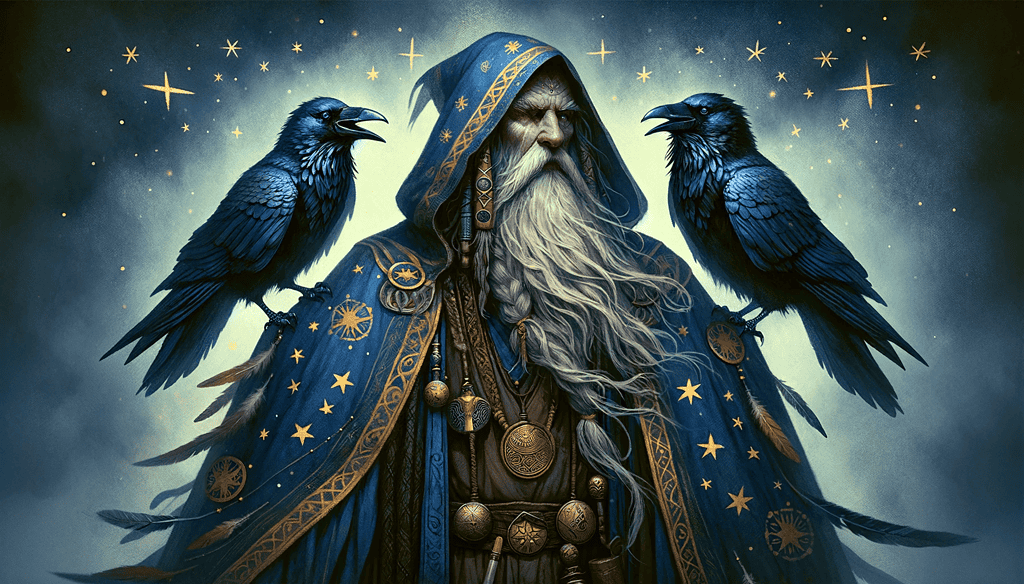
Huginn and Muninn, Odin’s ravens, are central figures in Norse mythology, embodying the concepts of thought and memory. Their stories, deeply rooted in ancient texts, offer a glimpse into the Norse cosmological understanding and the significance of these creatures to the gods, particularly Odin.
The poem about Odin’s ravens, Huginn and Muninn, is from the Poetic Edda, specifically within the poem Grímnismál.
This ancient text is a collection of Old Norse poems from Iceland, compiled in the 13th century but based on older source material that dates back to the Viking Age and earlier.
Grímnismál, or “The Sayings of Grímnir,” is one of the poems in this collection, where Odin, disguised as Grímnir, shares wisdom and knowledge, including details about his ravens, Huginn (thought) and Muninn (memory), who fly all over the world to bring information back to him.
This poem highlights the deep connection between Odin and his ravens, emphasizing their significance in Norse mythology as extensions of the god’s own mind and memory.
20. Huginn and Muninn fly every day
over the vast earth;
I fear for Huginn, that he won’t come back,
yet I’m more concerned about Muninn.
This verse from Grímnismál reveals Odin’s deep concern for his ravens. While he fears for Huginn, his anxiety is even greater for Muninn. This passage underscores the immense value Odin places on thought and memory, reflecting their essential roles in his pursuit of wisdom.
The Prose Edda, penned by Snorri Sturluson, further elaborates on the ravens’ significance in Norse mythology. In the section known as Gylfaginning, we learn that Huginn and Muninn perch on Odin’s shoulders, whispering news from the world into his ears.
This text emphasizes their importance to Odin, who relies on their daily reports to stay informed about the many events of the world. Their presence is so integral to Odin’s identity that he is referred to as the “raven-god.”
The Prose Edda also mentions them in Skáldskaparmál, listing them among poetic names for ravens, and in a kenning for ‘carrion’—showing their deep integration into the poetic and symbolic language of the Norse.
In Heimskringla, specifically in the Ynglinga saga, a more euhemerized (historically grounded) account of Odin’s life is provided.
Here, it is said that Odin bestowed the gift of speech upon Huginn and Muninn. These ravens flew across the land, bringing back tidings to Odin, thus making him “very wise in his lore.” This account emphasizes the unique relationship between Odin and his ravens, suggesting a mutual dependence and highlighting Odin’s quest for knowledge and wisdom.
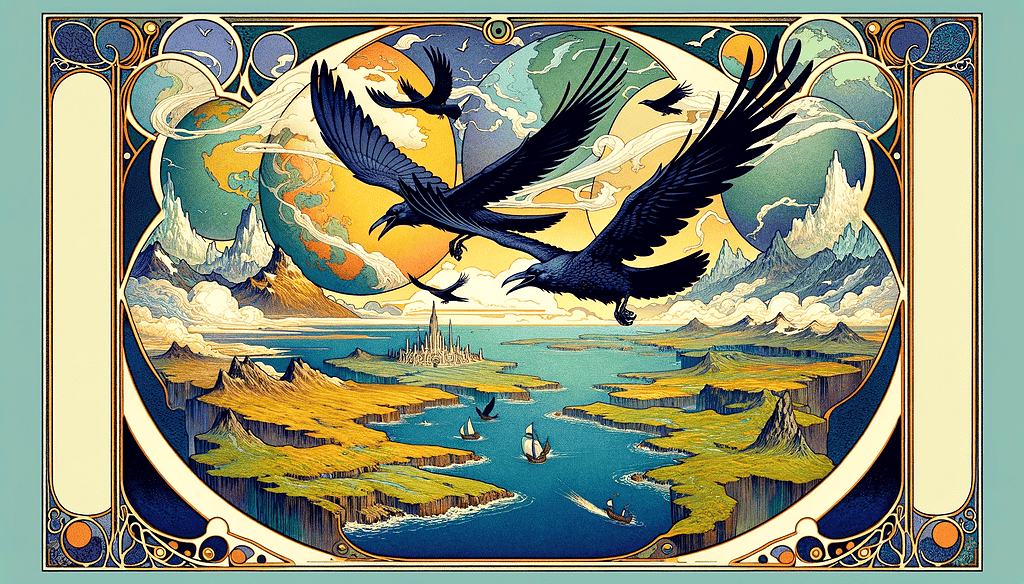
Across these texts, Huginn and Muninn are not merely birds but profound symbols of the human psyche, representing thought and memory—two essential components of wisdom. Their daily flights symbolize the constant quest for knowledge and the importance of remembering what has been learned. Moreover, their stories reflect the Norse understanding of the interconnectedness of all realms and the god’s active involvement in the mortal world.
Huginn and Muninn serve as vital links between Odin and the vast expanse of the world in Norse mythology. Their stories, as recounted in the Poetic Edda, the Prose Edda, and Heimskringla, underscore the themes of wisdom, memory, and the pursuit of knowledge, central to the Norse cosmological view.
Huginn’s name comes from the Old Norse word “hugr,” which means thought. Muninn’s name derives from “munr,” meaning memory. This connection highlights their importance to Odin, who relies on them to keep him informed about the world. Each day, the ravens fly across the nine realms, gathering information and insights, which they bring back to Odin in Asgard.
In Norse mythology, Huginn and Muninn are described as Odin’s eyes and ears. They see and hear everything, acting as his scouts and messengers. Their daily flights symbolize the importance of thought and memory in understanding the world and making wise decisions. This is a crucial aspect of Odin’s role as the god of wisdom.
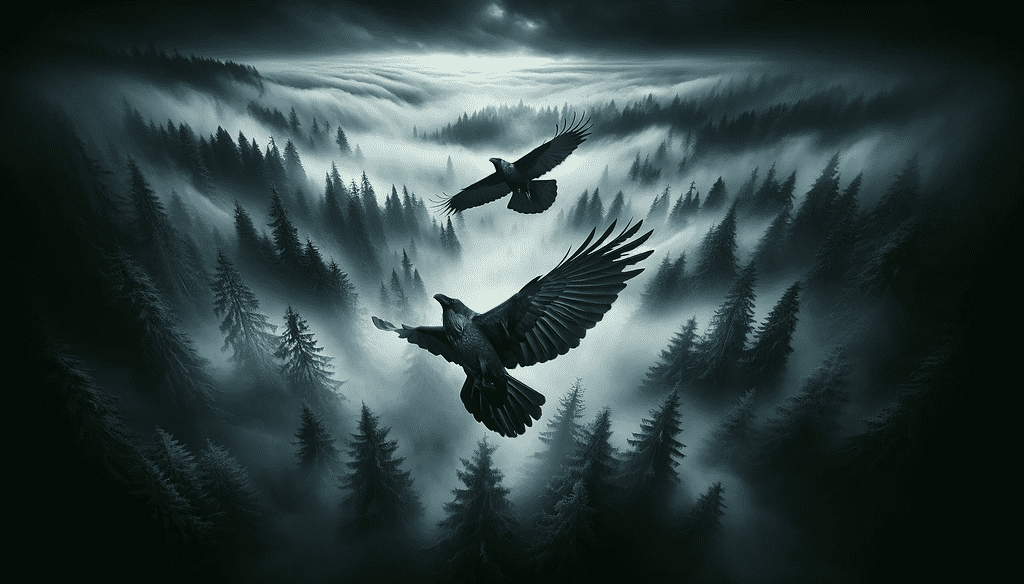
Huginn and Muninn have names deeply rooted in Old Norse language and culture.
“Huginn” is pronounced “HOO-gin” and comes from the Old Norse word “hugr,” meaning thought. This name reflects Huginn’s role in symbolizing the process of thinking and cognition.
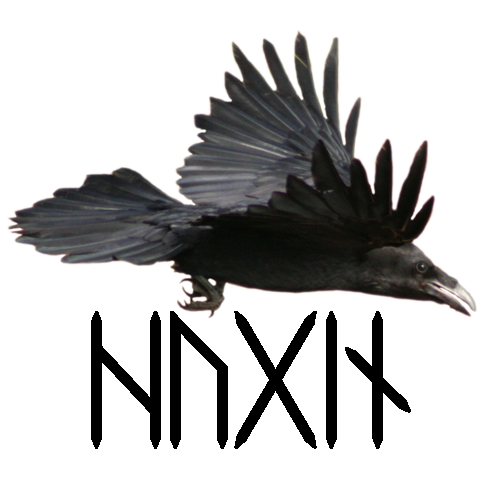
“Muninn,” pronounced “MOO-nin,” derives from “munr,” meaning memory. Muninn’s name highlights his connection to the act of remembering and memory.
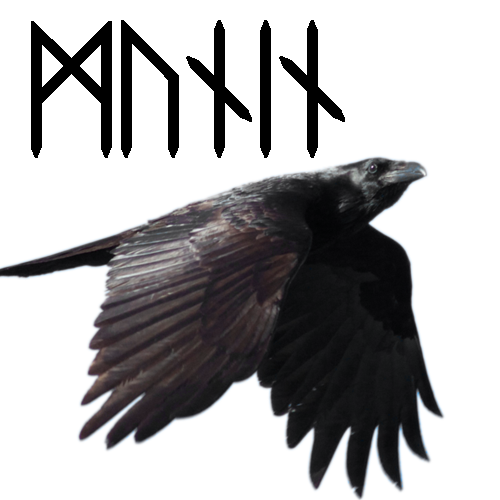
👇 Click below to hear the pronunciation of Huginn and Muninn 👇
As Odin’s ravens, they represent the crucial roles of thought and memory. Their daily flights across the nine realms gather information for Odin, emphasizing the Norse value of seeking knowledge and understanding the world.
Huginn and Muninn highlight the interconnectedness of thought and memory, essential for wisdom and informed decision-making. These ravens serve as powerful symbols, reminding us of the importance of staying informed and reflective in our pursuit of wisdom.
Huginn and Muninn embark on daily journeys across the nine realms, playing a vital role in Norse mythology. Each morning, these ravens leave Odin’s side to explore the world, returning by evening to share their discoveries.
Their flights cover vast territories, from the human world of Midgard to the divine realm of Asgard and the other mystical realms in between.
During their travels, Huginn and Muninn observe events, gather information, and witness the actions of gods, giants, and mortals alike. They see battles, hear secrets, and learn about the happenings in each realm. This daily reconnaissance helps Odin stay informed about everything occurring in the cosmos.
As Odin’s eyes and ears, Huginn and Muninn serve as his trusted messengers. They bring back crucial information that helps Odin maintain his wisdom and foresight. Their observations allow Odin to make informed decisions and foresee potential threats or opportunities.
By gathering knowledge from every corner of the nine realms, they ensure that no significant event goes unnoticed.
Huginn and Muninn’s role extends beyond mere observation. They symbolize the value of staying informed and the importance of intelligence in leadership.
Through their journeys, they embody the Norse belief in the pursuit of wisdom and the interconnectedness of all things. Their presence reminds us of the need to seek out knowledge and understand the world around us.
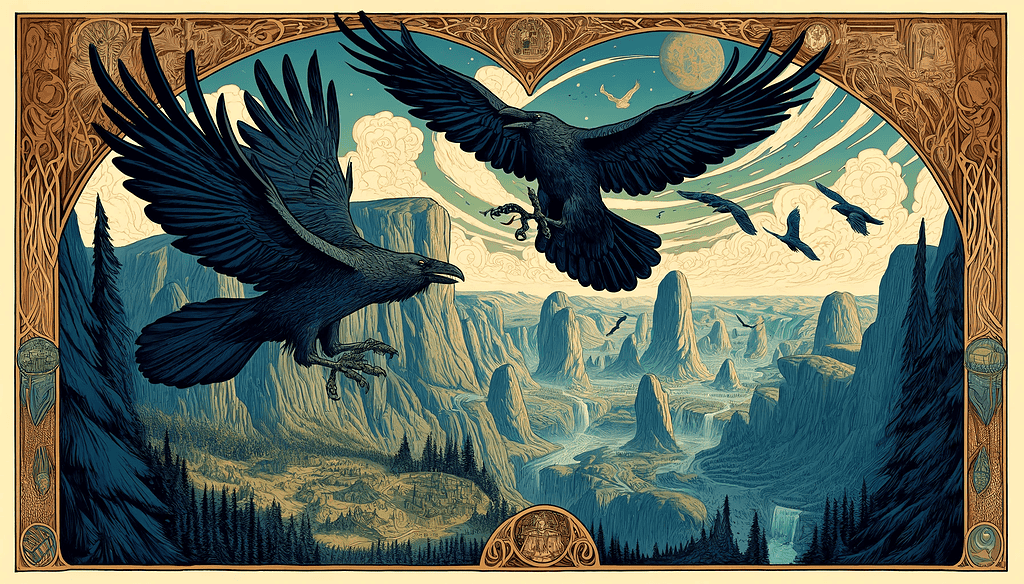
Contrary to some modern depictions, there is no traditional account of either raven being white in Norse mythology. The ancient texts describe Huginn and Muninn simply as ravens, without mentioning their color. The idea of a white raven likely arises from later interpretations or artistic creativity.
The concept of a white raven might be influenced by artistic license, as artists and storytellers seek to add unique elements to their work. While intriguing, these depictions do not align with the original Norse descriptions. Understanding this helps maintain the authenticity of Norse mythology and its rich traditions.
Exploring Huginn and Muninn from unique angles reveals their complexity as symbols of the interconnectedness of thought and memory. These ravens are not merely Odin’s companions; they play a crucial role in the Norse understanding of the cosmos. Their daily flights and the knowledge they bring back highlight the Norse value of continuous learning and vigilance.
The relationship between Odin and his ravens is deeply symbiotic. Huginn and Muninn are not just extensions of Odin’s senses; they are integral to his ability to oversee the realms.
This connection reflects the Norse belief in the power of knowledge and the importance of staying informed. Odin relies on their insights to maintain balance and order across the nine realms.
Huginn and Muninn’s constant journeys emphasize the fluid nature of thought and memory. They show how these elements are always in motion, gathering new information and experiences. This dynamic is crucial for understanding how the Norse viewed wisdom: as a continuous process of learning and adapting.
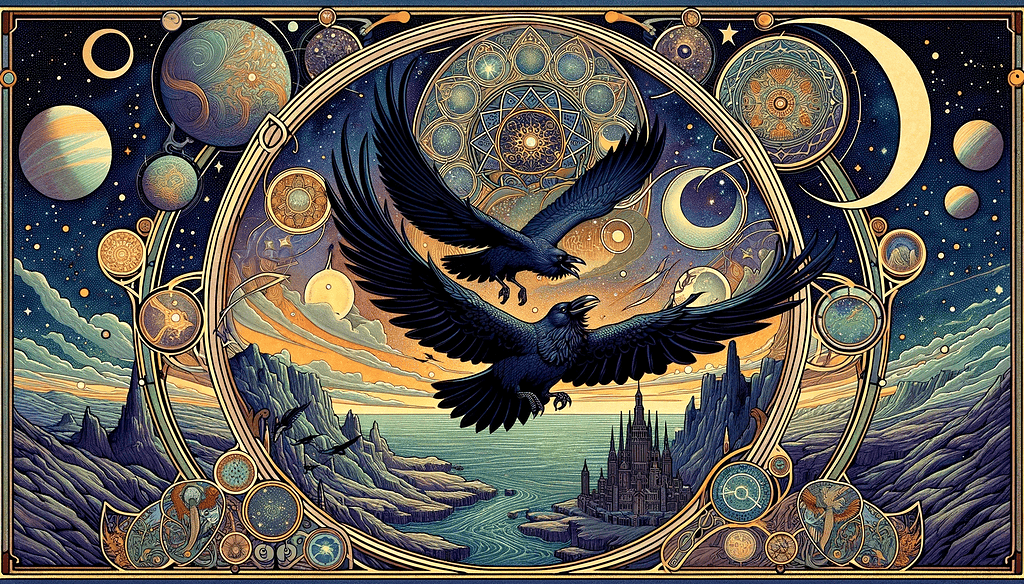
The ravens’ roles also underscore the interconnectedness of all things in Norse cosmology. Thought and memory are not isolated processes but are linked with every aspect of existence. By sending his ravens to explore the realms, Odin acknowledges the necessity of a holistic view of the world.
This approach ensures that he remains aware of all that transpires, allowing him to make informed decisions.
Viewing Huginn and Muninn through these lenses provides unique insights. It challenges conventional thinking by highlighting their active role in shaping Odin’s wisdom. This perspective encourages a deeper appreciation of how the Norse valued knowledge and the methods they used to obtain it.
The ravens symbolize more than just intelligence; they embody the ongoing pursuit of understanding and the vital role of memory in shaping our perceptions.
This interpretation of Huginn and Muninn invites a broader exploration of Norse mythology, encouraging us to see the gods and their symbols as dynamic and multifaceted.
Huginn and Muninn are central to understanding Odin’s quest for knowledge in Norse mythology. These ravens symbolize thought and memory, showing their importance in the interconnected realms. Their daily flights gather vital information, emphasizing the value of staying informed. Contrary to some modern depictions, traditional Norse texts do not describe either raven as white.
The relationship between Odin and his ravens highlights the symbiotic nature of thought and memory. By exploring these aspects, we gain deeper insights into Norse beliefs and the holistic approach to wisdom.
Huginn and Muninn’s roles remind us of the continuous pursuit of knowledge and understanding in our own lives.
👇 Handmade with love, by me 👇
